Hiya all dear travelers and dear Hivers :)
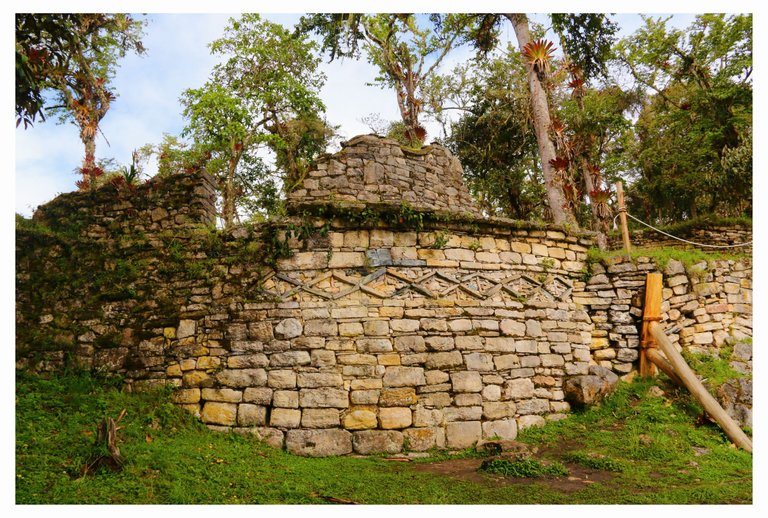
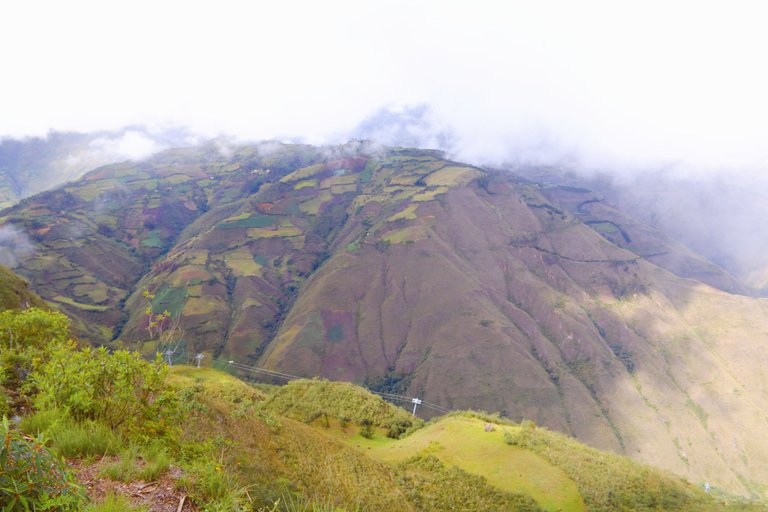
From Chachapoyas to the ruins
Our location is Chachapoyas, Peru.
Chachapoyas is a colonial town of Peru that's located in the highlands, precisely between the coast and the jungle region of the country. Owing to its location, back in the day it used to serve as a 'bridge town' for transporting goods from the jungle to the coast.
70km north of this charming town, we find Kuélap, an archaeological site lost in the misty mountains of the Peruvian Highlands. And when I say lost..I do mean it! There's no clear path leading to the site, the way there is tricky to find. But for me, it is of course part of the charm. If I'm to go see some ruins, the way leading to them should also be..ruined! adding up to the character of the excursion!
Basically what I did was to take a minibus (colloquially named "combi") from Chachapoyas to Tingo Viejo. I asked the driver to drop me off as close to Kuélap as possible (as I was advised by a salesman in the town), and then all I had to do was pray that I was on the right track hahah! Well, gladly I was.
I had a long way ahead of me, around 8km in total from where I was dropped.
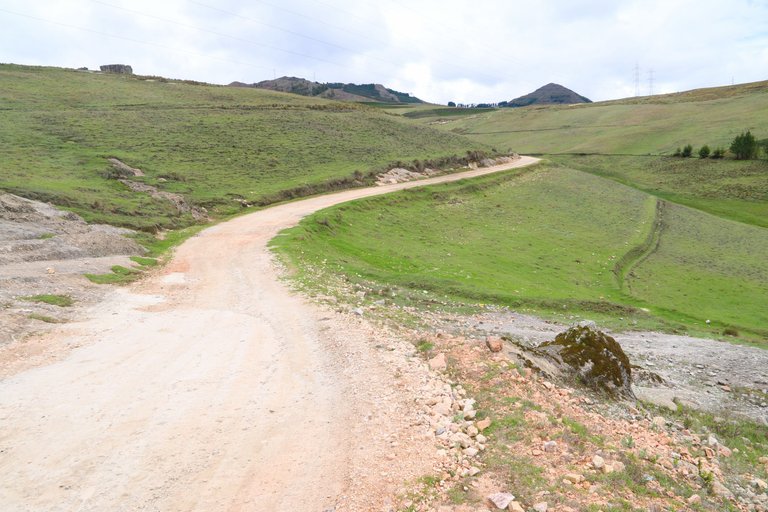
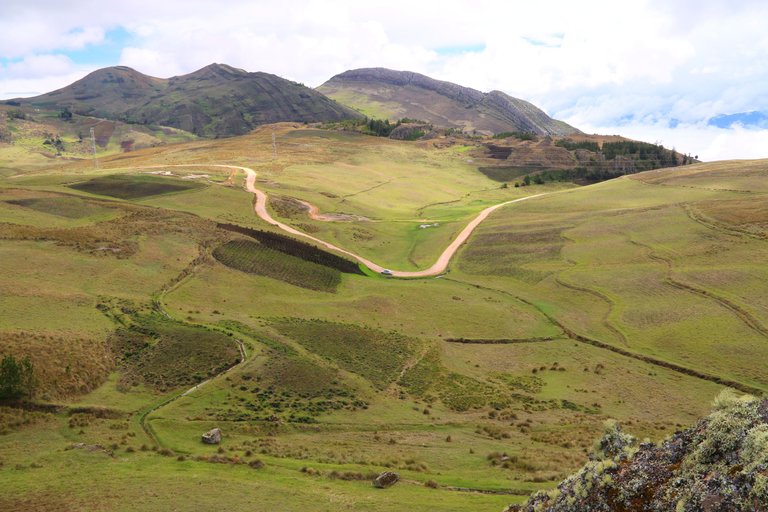
Mesmerizing views made time fly.
When I started noticing some ruin-looking-stones at the distance, I knew I was very close.
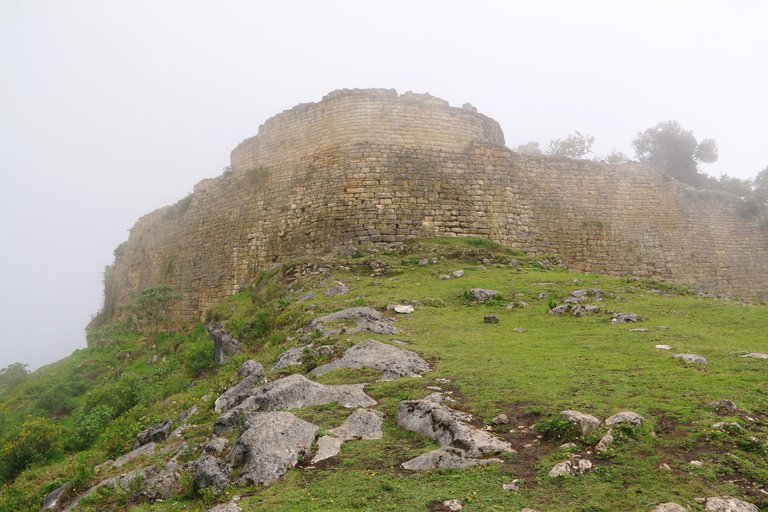
It was very misty so I would only see them at intervals, through my binoculars. After the last steep ascent, I was there!
Kuélap
The site of Kuélap is basically a large set of ruins made of limestone. It constitutes a huge urban settlement (6 hectares) dating from around 1000AD. Some constructions though date even further back in time, from 500AD. This means that the Kuélap city was built between 500 and 1000 years before Machu Pichu. Thus it is regarded to belong to the pre-Inca culture.
The old settlement is largely overgrown but what remains and stands out are the circular stone foundations of the houses and communal buildings.

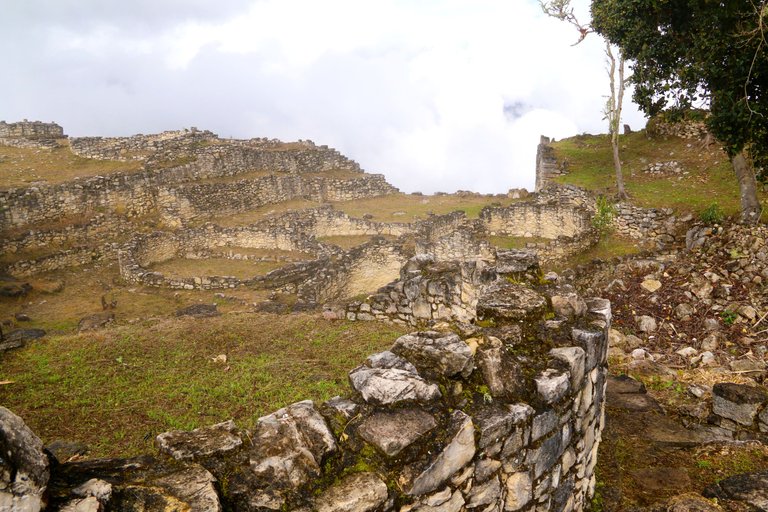
These circular fortifications were built in the typical style of the Chachapoyas, in short distance from one another, and predominantly with the use of limestone. They are about 550 in total.
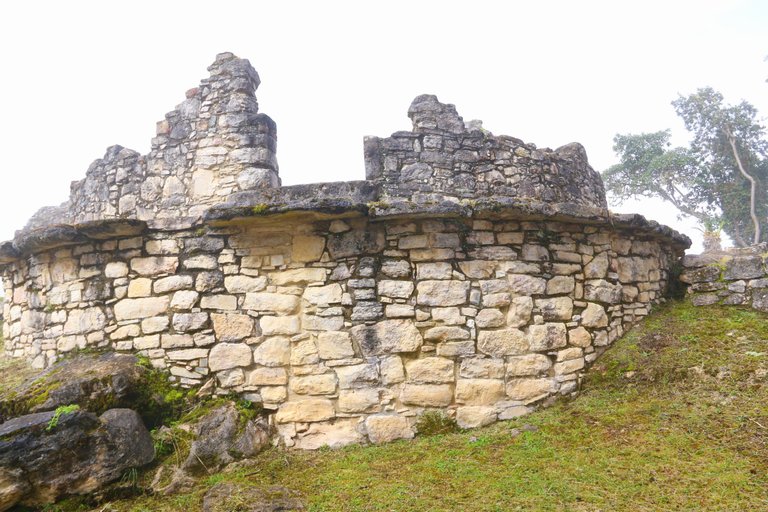
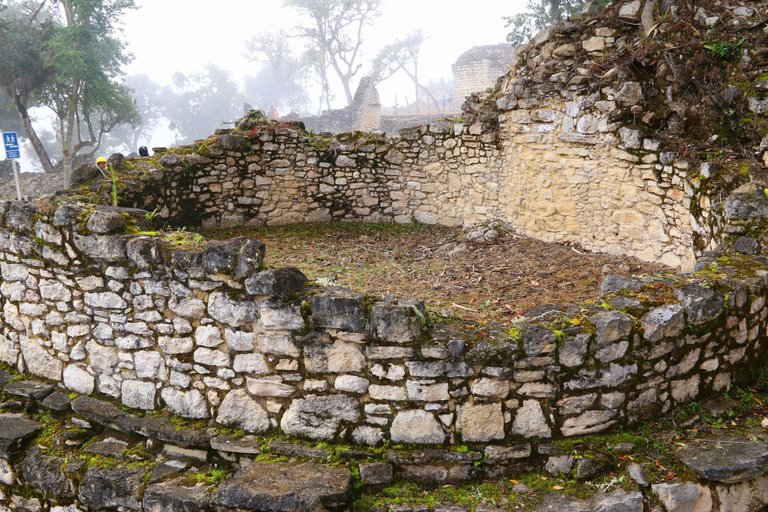
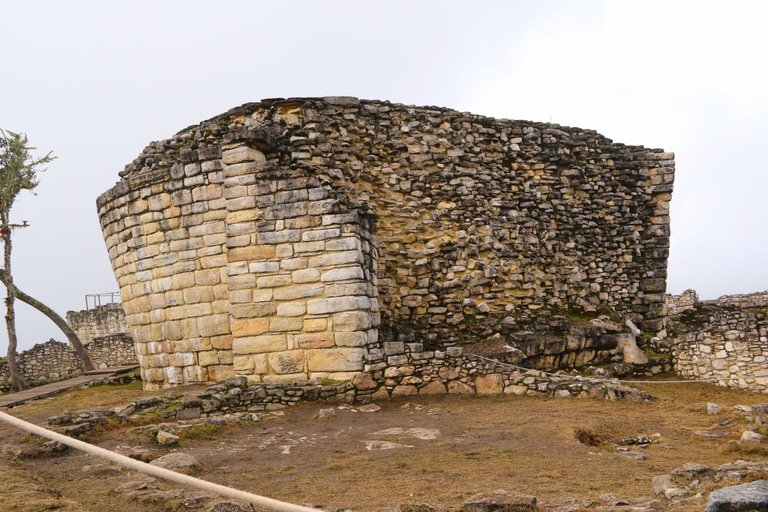
The Inkwell is known to be a special building in the Kuélap settlement. Most likely it represented a kind of temple and had a religious function. This theory can be supported by a big number of animal bones that were found in the construction. Another theory suggests that the Inkwell served as a solar observatory.
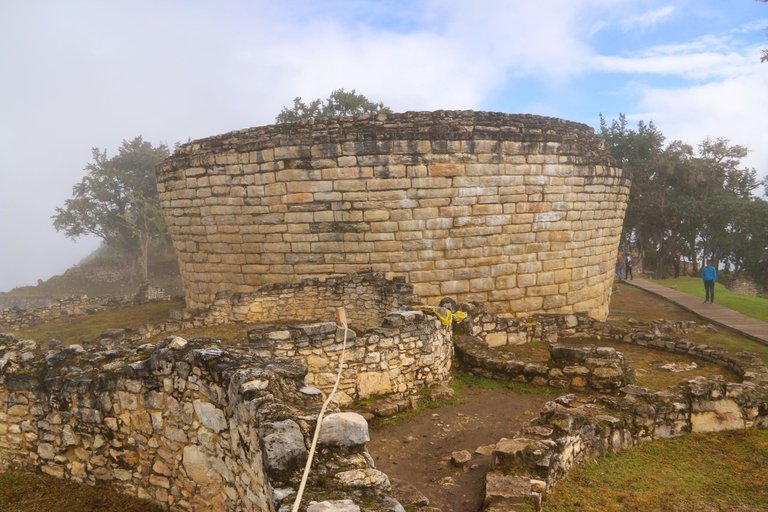
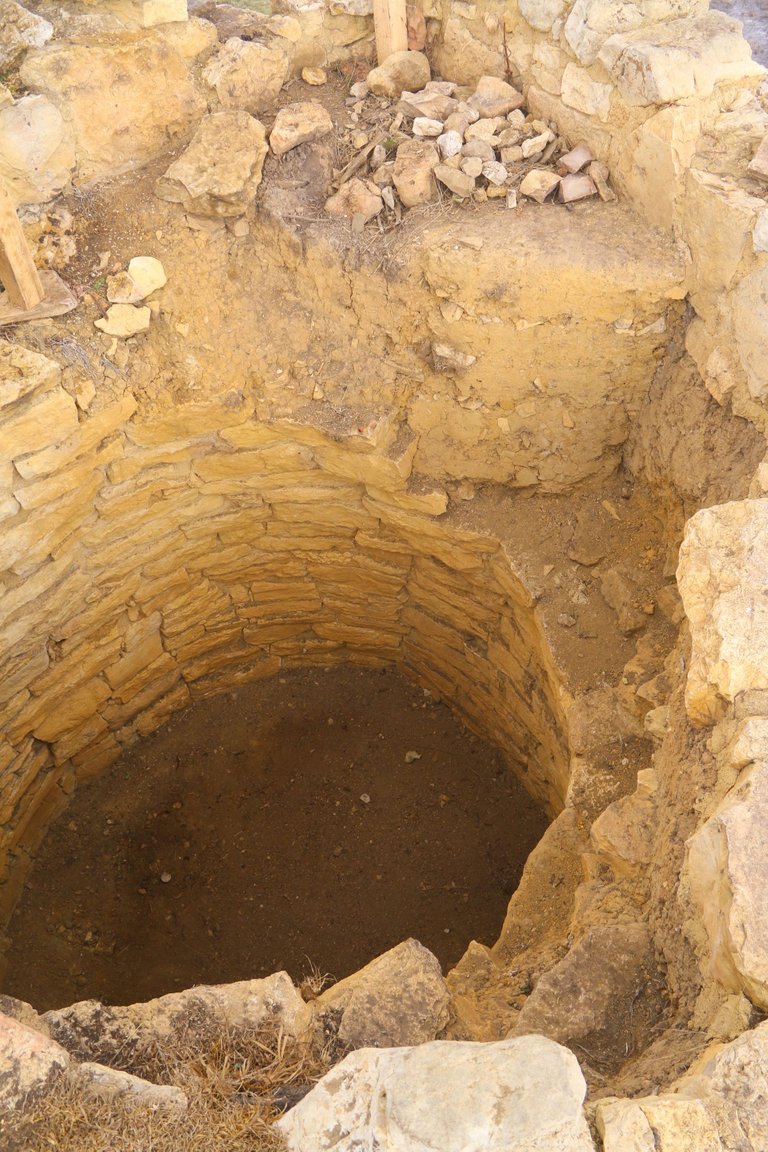
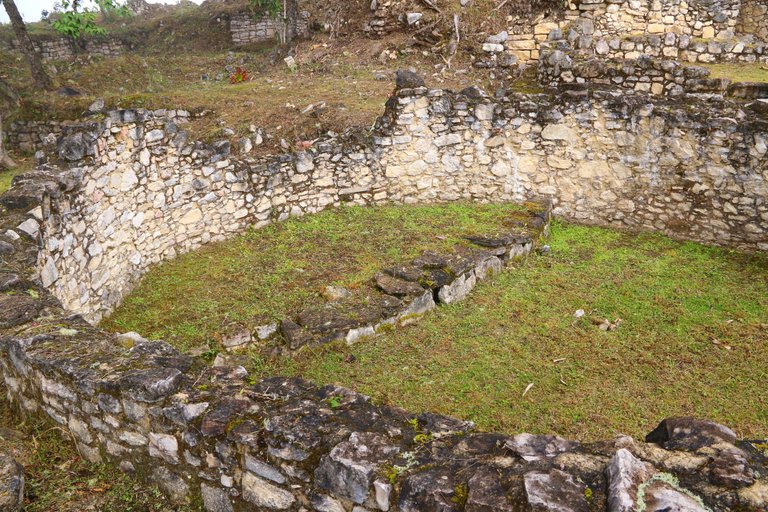
Taking the opportunity here to state that this site is is not a typical archaeological site in which a visitor can follow a certain route through the ruins and get provided with background information on the sightings. Guidelines and information are sparse, almost inexistent.


The housing complex was protected by large stone walls, up to 20m in height. The mighty walls encircled the city around its entire perimeter, creating the impression of a fortress.
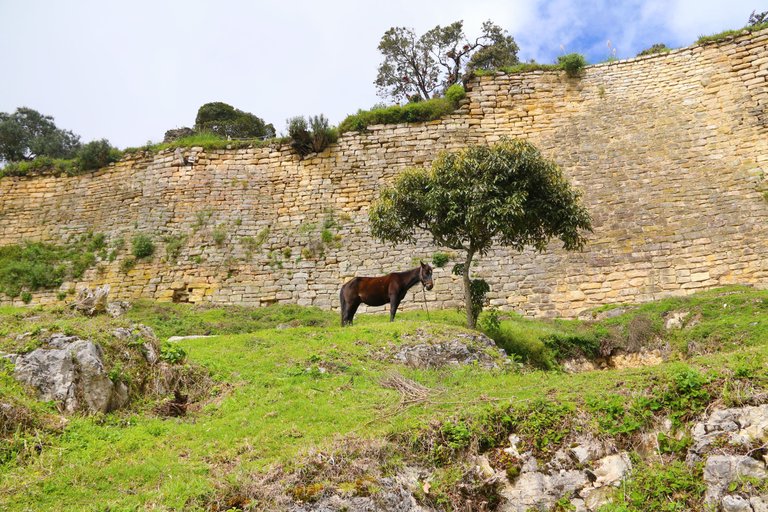
I abso-lutely love photography of living beings (preferably not humans) in ancient settings. Like this beautiful horse against a massive wall that was built a thousand years ago. It's like the present meets the past; the living meets the lifeless; the youthful meets the aged.
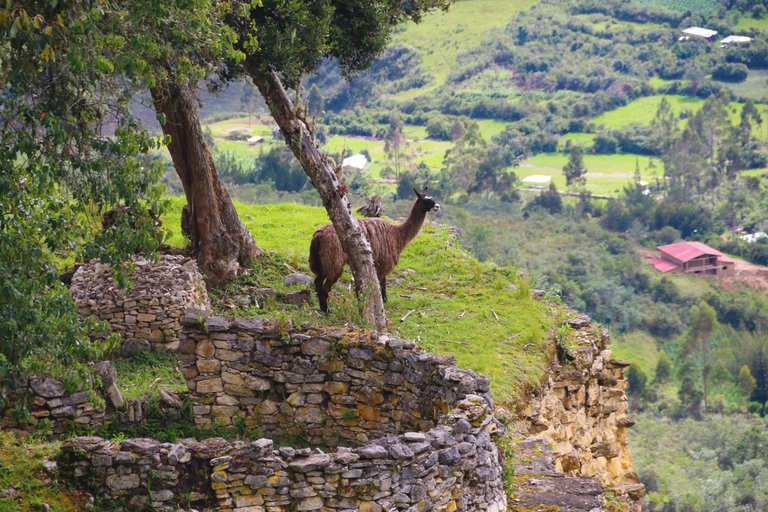

Stone friezes
Oncoming, let's take a closer look at the architectural marvels of this lost civilization.
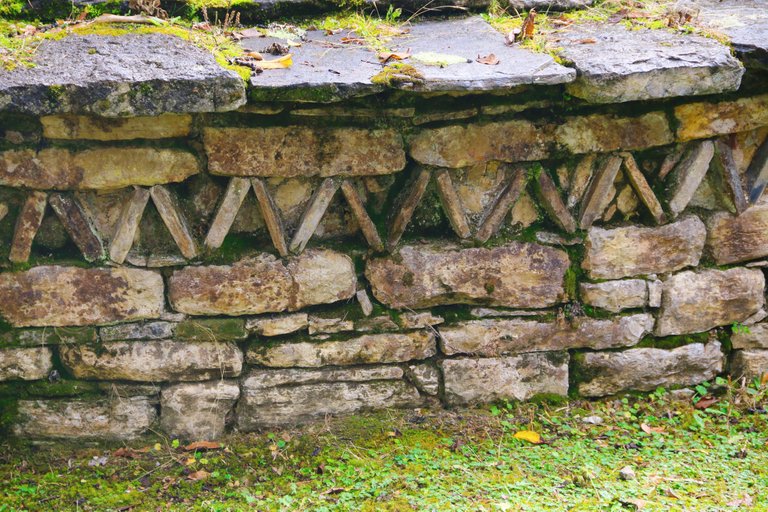
High-relief stone friezes are very commonly found in the Chachapoyas' constructions and as a rule, they have the shape of diamonds. This architectural style is said to be typical in the area of Chachapoya, as it is also commonly found in another large complex of ruins called Yalápe.
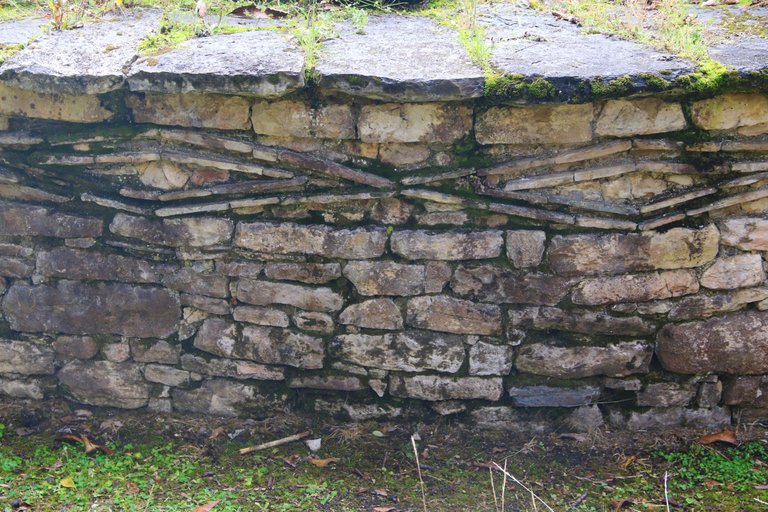
The friezes do not appear solely for decorative reasons, they also represent their religious beliefs. The Chachapoyas, among other deities, worshipped numerous animals. The rhombus is a shape regularly found on the walls of the ruins, and it is believed to symbolise the eye of the puma which was sacred in the Chachapoyas religion. Zig-zag decorations symbolise another animal that they worshipped, the snake.
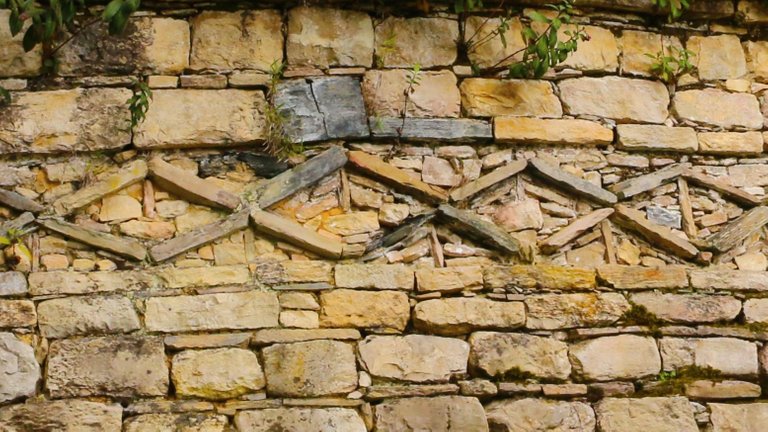
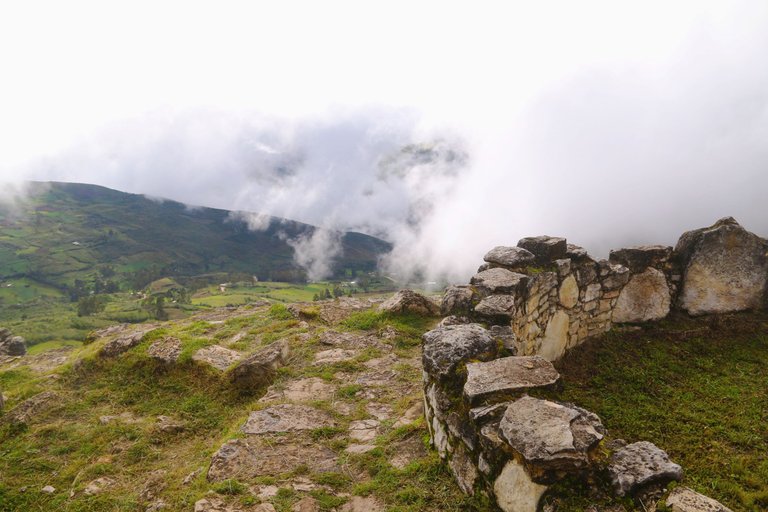
Mist makes this site looking even more atmospheric. The landscape carries me back to those ancient times when the Chachapoyas lived in the circular houses, worshipping animal deities, having rituals, gazing at the mountains on the horizon, observing the movements of the sun during the day and the stars at nights...
So let's take a plunge into some history!
The Chachapoya culture
The Chachapoyas are also known by the names The Cloud People of Peru and The Cloud Warriors. There's a lot of mystery around this lost civilization but it is considered common knowledge that they constituted a big population, which, at its peak, reached half a million.
The Chachapoyas started occupying the area that we just walked through already in the 5th century but they officially settled there between 900 and 1100AD. They strategically built their establishment on top of the mountain, 3.000m above sea level, overlooking the Utcubamba Valley. There they lived and flourished for at least four centuries.
The mystical cloud people represented a powerful culture, with shamanic rituals, fighting ethos and iconic sarcophagi. They were eventually conquered by the Incas (1.470AD) which were in turn conquered by the Spanish.
Theory on the origin of the Chachapoyas
And now I want to share with you an exciting theory about this marvelous lost civilization.
The Chachapoyas have left numerous sarcophagi behind them.
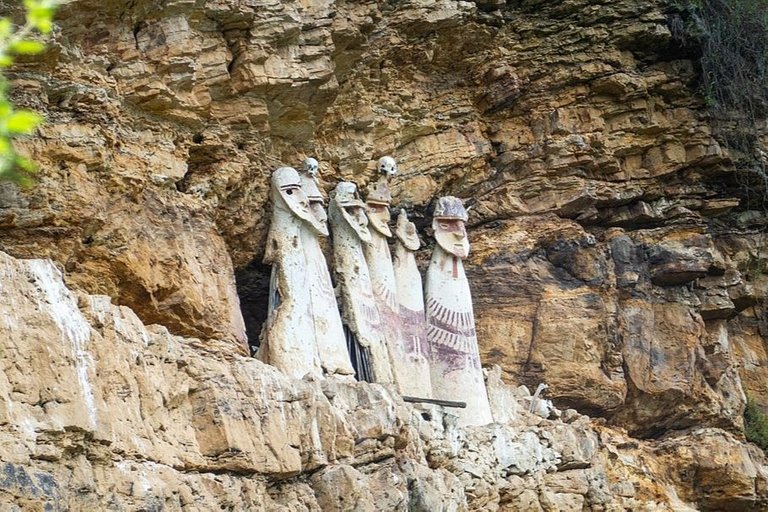
Source: Wikipedia
When these anthropomorphic sarcophagi were brought to light, it was easy to notice their strong resemblance to the famous statues of the Easter Island, the Moai.
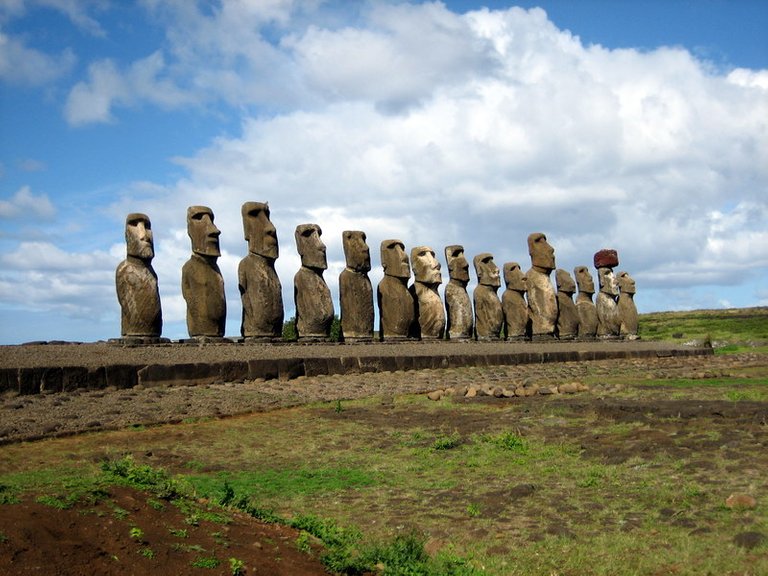
Source: Wikipedia
What's more, the genetic research that has been conducted on the sarcophagi's DNA points towards a genetic isolation, meaning that the Chachapoyas do not share any DNA origins with other Andean Indians. Hence, both their resemblance to Moai, and their genetic isolation, allow us to ask the question: could the Chachapoyas be the survivors of a massive cataclysm that hit the Easter Islands? These survivors could have taken refuge high up on Andean mountains, far away from the fierce and merciless ocean. In this scenario, their sarcophagi constitute a tribute to their glorious Moai, thus their striking resemblance!
We might never know with certainty whether there is an actual link between the Chachapoyas and the Easter Island, but we can still use all the findings that've come on the scene up to the present day, so as to dig into history and look for the truth. And even if we never find it, we are free to make hypotheses and premises. I personally find it particularly creative, productive and inspiring!
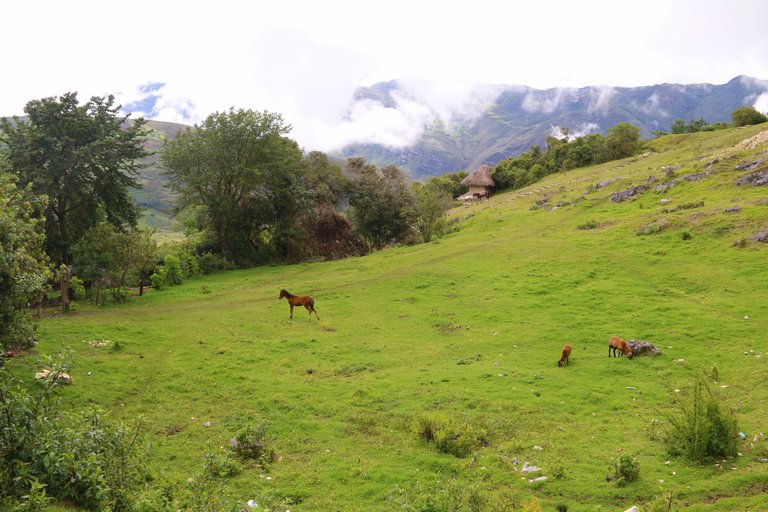
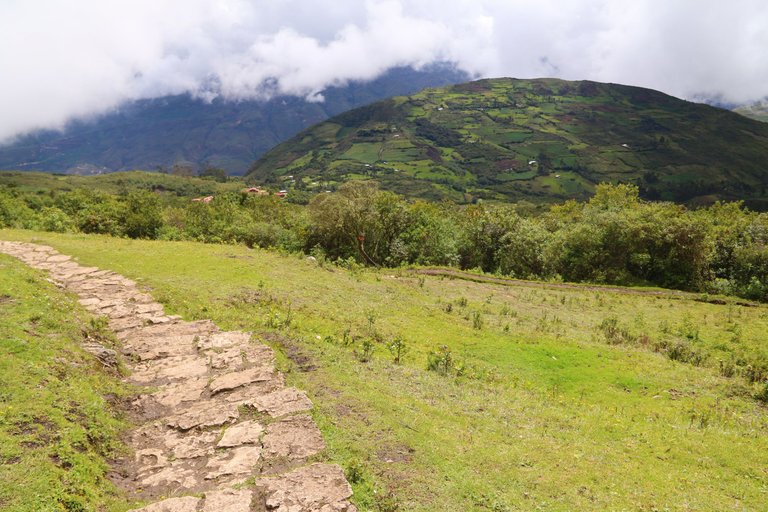
Goodbye Kuélap, thank you for traveling me back to antiquity and into the mystical world of the Chachapoyas.
Thank you for the visit, folks :)
ESPAÑOL
Hola a todos, queridos viajeros y queridos Hivers :)

Hasta ahora ya he compartido con ustedes mi pasión por la aventura, la exploración, los viajes. Hoy mezclaré un nuevo ingrediente en este cóctel de pasiones: mi pasión por la historia y la arqueología! Les llevaré conmigo a un fascinante sitio arqueológico en las tierras altas peruanas, y mientras les guiaré por las ruinas del sitio, les brindaré informaciones sobre la civilización que solía florecer en la cima de esta montaña:

De Chachapoyas a las ruinas
Nuestra ubicación es Chachapoyas, Perú.
Chachapoyas es un pueblo colonial de Perú que se encuentra en la sierra, precisamente entre la costa y la selva del país. Por su ubicación, antiguamente servía como 'pueblo puente' para el transporte de mercancías desde la selva hasta la costa.
70km al norte de este encantador pueblo, encontramos Kuélap, un sitio arqueológico perdido en las neblinosas montañas de la sierra peruana. Y cuando digo perdido... lo digo en serio! No hay un camino claro hasta al sitio así que es algo difícil de encontrar. Sin embargo para mí es parte del encanto. Si voy a por ver algunas ruinas, el camino que me lleva a ellas también debería de ser... arruinado! realzando al carácter de la excursión!
Básicamente lo que hice fue tomar un minibús (coloquialmente llamado "combi") de Chachapoyas a Tingo Viejo. Le pedí al conductor que me dejara lo más cerca posible de Kuélap (como me había aconsejado un vendedor en Chachapoyas), y luego solo tuve que rezar para estar en el camino correcto jajaja! Bueno, por suerte lo estaba.
Tenía un largo camino por delante, unos 8 km en total.


Las vistas tan hermosas hicieron que el tiempo volara.
Cuando comencé a notar algunas piedras que parecían ruinas a la distancia, supe que estaba muy cerca.

Había mucha bruma, así que no se veían bien las ruinas desde lejos. Me quedaba la última subida empinada y luego ya había llegado!
Kuélap
El sitio de Kuélap es básicamente un gran conjunto de ruinas hechas de piedra caliza. Constituye un enorme asentamiento urbano de 6 hectáreas que data de alrededor del año 1000 d.C. Sin embargo, algunas construcciones datan aún más atrás en el tiempo, desde el año 500 d.C. Esto significa que la ciudad de Kuélap fue construida entre 500 y 1000 años antes que Machu Pichu. Por lo tanto, se considera que pertenece a la época preincaica.
El antiguo asentamiento está en gran parte cubierto de vegetación, pero lo que queda y se destaca son las construcciones circulares de piedra de casas y edificios comunales.


Estas fortificaciones circulares fueron construidas al estilo típico de los Chachapoyas, a poca distancia una de la otra, y predominantemente con el uso de piedra caliza. Son unos 550 en total.



Se sabe que el Tintero es un edificio especial en el asentamiento de Kuélap. Muy probablemente era un tipo de templo y tenía una función religiosa. Esta teoría puede ser apoyada por una gran cantidad de huesos de animales que se encontraron en la construcción. Otra teoría sugiere que el Tintero sirvió como observatorio solar.



Aprovecho la oportunidad aquí para decir que este sitio no es un sitio arqueológico típico en el que un visitante puede seguir una ruta determinada a través de las ruinas y obtener información de fondo sobre los avistamientos. La información es muy poca.


El complejo estaba protegido por grandes muros de piedra, de hasta 20m de altura. Las poderosas murallas rodeaban la ciudad en todo su perímetro, creando la impresión de una fortaleza.

Me encanta la fotografía de seres vivos (preferiblemente no humanos) en escenarios antiguos. Como este hermoso caballo contra un muro macizo que fue construido hace mil años. Es como si el presente se encontrara con el pasado; lo vivo se encuentra con lo sin vida; el joven se encuentra con el anciano.


Frisos de piedra
Próximamente, echemos un vistazo más de cerca a las maravillas arquitectónicas de esta civilización perdida.

Los frisos de piedra son muy comunes en las construcciones de los Chachapoyas y por lo general tienen forma de diamante. Se dice que este estilo arquitectónico es típico en el área de Chachapoyas, ya que también se encuentra comúnmente en otro gran complejo de ruinas llamado Yalápe.

Los frisos no tienen solamente una función decorativa, sino también representan sus creencias religiosas. Los Chachapoyas, entre otras deidades, rendían culto a numerosos animales. El rombo es una forma que se encuentra regularmente en las paredes de las ruinas, y se cree que simboliza el ojo del puma que era sagrado en la religión de los Chachapoyas. Las decoraciones en zig-zag simbolizan otro animal que adoraban, la serpiente.


La niebla hace que este sitio se vea aún más atmosférico. El paisaje me transporta a aquellos tiempos antiguos cuando los Chachapoyas vivían en sus casas circulares, adorando deidades animales, teniendo rituales, mirando las montañas en el horizonte, observando los movimientos del sol durante el día y las estrellas en las noches...
Así que vamos a sumergirnos en algo de historia!
La cultura Chachapoya
Los Chachapoyas también son conocidos con los nombres de La Gente de las Nubes del Perú y Los Guerreros de las Nubes. Hay mucho misterio en torno a esta civilización perdida, pero se considera de conocimiento común que constituían una gran población, que, en su apogeo, llegó al medio millón.
Los Chachapoyas comenzaron a ocupar el área que acabamos de recorrer ya en el siglo V pero se establecieron oficialmente allí entre el 900 y el 1100 d.C. Construyeron estratégicamente su establecimiento en la cima de la montaña, a 3.000 m sobre el nivel del mar, con vista al valle de Utcubamba. Allí vivieron y florecieron durante al menos cuatro siglos.
La gente mística de las nubes representaba una cultura poderosa, con rituales chamánicos y sarcófagos icónicos. Eventualmente fueron conquistados por los Incas (1470 d.C.) que a su vez fueron conquistados por los españoles.
Teoría sobre el origen de los Chachapoyas
Y ahora quiero compartir con ustedes una interesante teoría sobre esta maravillosa civilización perdida.
Los Chachapoyas han dejado tras de sí numerosos sarcófagos.

Fuente: Wikipedia
Cuando estos sarcófagos antropomórficos salieron a la luz, fue fácil notar su gran parecido con las famosas estatuas de la Isla de Pascua, los Moai.

Fuente: Wikipedia
Además, la investigación genética que se ha realizado sobre el ADN de los sarcófagos apunta hacia un aislamiento genético, lo que significa que los Chachapoyas no comparten ningún origen de ADN con otros indígenas andinos. Consecuentemente, tanto su gran similaridad con los Moai, como su aislamiento genético, nos permitan hacernos la pregunta: ¿
serán los Chachapoyas los sobrevivientes de un cataclismo masivo que azotó la Isla de Pascua? Estos sobrevivientes podrían haberse refugiado en lo alto de las montañas de los Andes, lejos del feroz océano. En este escenario, sus sarcófagos constituyen un homenaje a su glorioso Moai --de ahí su sorprendente parecido!
Es posible que nunca sepamos con certeza si existe un vínculo real entre los Chachapoyas y la Isla de Pascua, pero sí que podemos usar todos los hallazgos que han aparecido para profundizar en la historia y buscar la verdad. Y aun sí nunca la encontremos, somos libres de hacer hipótesis y premisas. Personalmente me parece muy creativo, productivo e inspirador!


Adiós Kuélap, gracias por el viaje a la antigüedad y al místico mundo de los Chachapoyas.
Gracias por la visita, amigos :)
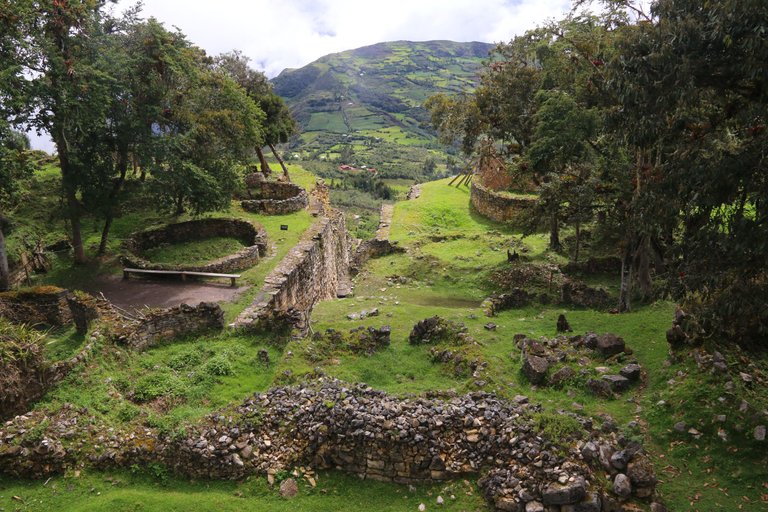
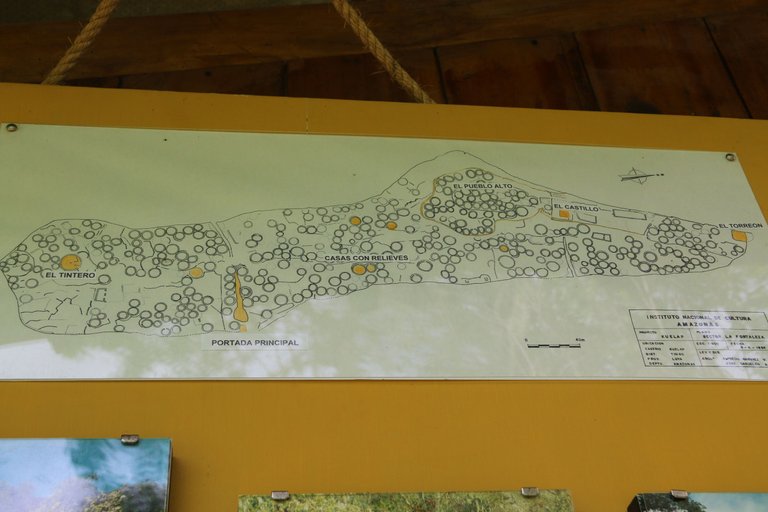
~~~ embed:1594502167456796672 twitter metadata:MTM3MzYzMTEwMjg0NjM0NTIxOXx8aHR0cHM6Ly90d2l0dGVyLmNvbS8xMzczNjMxMTAyODQ2MzQ1MjE5L3N0YXR1cy8xNTk0NTAyMTY3NDU2Nzk2NjcyfA== ~~~
The rewards earned on this comment will go directly to the people( @lofone, @intoy.bugoy ) sharing the post on Twitter as long as they are registered with @poshtoken. Sign up at https://hiveposh.com.
You did n amazing discovery on your travel, Thank you for sharing this one Historic place. Indeed the place is beautiful and lot of learning.
Hi @intoy.bugoy ! Thanks a lot for your visit and your kind comment, I'm glad you enjoyed learning about this gem of Peru!
Que hermosas fotografías, me encanta el enfoque que le das, llenas de verde y mucho color, he viajado contigo en la descripción de tu recorrido
Muchísimas gracias por tu comentario amigo! Me alegro que hayas disfrutado tanto el recorrido virtual :)
What a place to visit and capture. Must have been a powerful civilization at their peek. Love the post. Thanks for sharing.
!LUV
!PIZZA
Hi @pravesh0 ! Infinite thanks for your feedback and your reblogging. I'm really glad you enjoyed reading about this glorious civilization. Indeed, they must've been very powerful and highly developed during their best era (between 900 and 1200AD). I mean..look at their fortress! I have the impression that many archaeological sites in Peru are being underestimated, overshadowed by Machu Picchu..
We need much more archeological work, especially outside the developed counties. I believe we still have so much to find.
I agree and I find it exciting that there's still so much we haven't discovered or examined in detail.
What a find, I noticed not one tourist there either! Such an amazing place to explore, hope you were able to spend a lot of time there.
Right?! This place is an undervalued gem
So often that is the case, it pays to do research like you did, and find these gems. Well done!
I am suddenly interested with this kind of passion, travelling with the love of history and archeology!
That historical structure and the statues is a masterpiece! I wont get tired walking seeing those majestic sights. Thanks for this tour.
Hi @callmesmile , thanks so much for your visit and your comment. Hehe, I would never get tired of walking among these mesmerizing ruins! And yes, I love it when I can combine my travels with my big love for history, I get pumped up with traveling back in time!
Maravilloso reportaje, amiga. ¡Otro tema que compartimos en interés, la arqueología! El caso es que precisamente la civilización que nos presentas aquí, los Chachapoyas, es la primera vez que los veo.
Es fascinante la teoría de que puedan ser los descendientes de los Moai. Desde luego que a la vista está que comparten algo, el parecido con los sarcófagos es indudable.
Me sorprende lo bien conservados que están los restos. Imagino que la dificultad del acceso a ellos ha favorecido que se evitara el expolio.
Gracias por esta publicación llena de enigmas, conocimiento y belleza. ¡Es un completo! Un abrazo. 🤗
Hola @palomap3 ! Muchas gracias por tu visita y tu comentario. Me alegro que hayas disfrutado de todos los elementos de esta publicación :)
Por desgracia, los Chachapoyas no han recibido la atención y la apreciación que en realidad les merece...
Y seguro que hay muchas culturas más que también lo merecen. Sabemos muy poco sobre nuestra propia historia y la mayor parte son conjeturas o invenciones.
Restos como los que nos has enseñado aquí son apenas la punta del iceberg de los Chachapoyas. Se me ocurren miles de preguntas solo con mirar esas piedras: ¿cómo se organizaban? ¿Qué comían? ¿Tenían una religión? ¿Cómo se relacionaban las familias? ¿Manifestaban algún tipo de arte? ¿Se relacionaron con otras culturas?
Es asombrosa la labor de los arqueólogos y los antropólogos, la de información que son capaces de ir entresacando del más mínimo resto. Por eso me gusta leer contenido tan completo y educativo como este. Enhorabuena por tu gran trabajo. 🤗🥰 !LUV
Guau Paloma me alegro muchísimo que compartes mi pasión por la arqueología y las civilizaciones perdidas. Entiendo completamente las preguntas que van surgiendo dentro de ti sobre estas ruinas y las personas que solían vivir en ellas. Soy igual , con una solo visita a un sitio histórico , se me ocurren miles de preguntas; me lleno de curiosidad, mi imaginación comienza a volar, mi mente a intentar interpretar y todo mi ser se emociona y se fascina del gran misterio del pasado!
Y mil gracias por apreciar mi trabajo. Me encanta 'vestir' a mis publicaciones sobre viajes con algo de background informativo hehe :D
Un abrazo!
What a trip. It must be great to say that you go to a place like this just by taking a bus hehehe it must be very nice to go to these places, quite an experience to visit places with so much history and culture, wrapped in a certain religious mysticism...
It looks like you know the subject or document it well, I say it by the eye of the puma or the snake that are in the form that they used to decorate their walls; in addition to the statues resembling the Moai.
How great, beautiful photos.
Hehehe la verdad que viajar en autobús añade mucha aventura a mis viajes! Especialmente en un país como Perú ;)
Gracias por tu tiempo y tu feedback.Hola @gaboamc2393 ! Muchísimas gracias por tu visita y tu comentario. Me alegro que hayas disfrutado el viaje a este lugar lleno de historia, cultura y misticismo!
This is amazing! what a great panorama!
Hopefully, someday I could make it there.
Thank you for sharing 😊
I wish you do make it there , it's a place full oh special energy, history, culture, mysticism. In my opinion it's somewhat underrated.
Thanks a lot for your visit and your comment @iqbalnindol :)
Peru has some beautiful archaeological sites, thanks for showing us something. Great post
It really does! And in my opinion, a big number of archaeological sites in Peru are in fact underrated. I suppose they're all being overshadowed by Machu Picchu but damnit, Peru's got so much more than that!! Like Kuélap which is so much more ancient than Machu Picchu..
Thanks a lot for your visit and your comment @stefano.massari , I'm glad you enjoyed my post :)
The saturation of the green is really great. You have to fly for hours to see these places. I wish the airplane prices were a little more affordable so that we could see them, but our friends like you show us things that we did not know existed before by sharing such articles and pictures. I like the surroundings very much. I feel like having a picnic :D
Hi @arduilcelebren ! Thanks so much for your visit and your comment, I'm glad you enjoyed the photography and you felt like having a picnic on the peruvian grass hehehe! It's my pleasure to be travelling you across continents through my posts ;) Stay tuned for more trips hehe!
Congratulations, your post has been added to Pinmapple! 🎉🥳🍍
Did you know you have your own profile map?
And every post has their own map too!
Want to have your post on the map too?
Yay! 🤗
Your content has been boosted with Ecency Points
Use Ecency daily to boost your growth on platform!
Support Ecency
Vote for new Proposal
Delegate HP and earn more, by @marilandia.
Discord Server.This post has been manually curated by @bhattg from Indiaunited community. Join us on our
Do you know that you can earn a passive income by delegating to @indiaunited. We share 100 % of the curation rewards with the delegators.
Here are some handy links for delegations: 100HP, 250HP, 500HP, 1000HP.
Read our latest announcement post to get more information.
Please contribute to the community by upvoting this comment and posts made by @indiaunited.
Thank you so very much @indiaunited and @bhattg for your curation and your support I highly appreciate it 🙏
!giphy welcome
!PIZZA
Via Tenor
Daily Travel Digest #1705.
Become part of our travel community:
- Join our Discord
- Learn more about our travel application
Hiya, @ybanezkim26 here, just swinging by to let you know that this post made it into our Top 3 in Your post has been manually curated by the @pinmapple team. If you like what we're doing, please drop by to check out all the rest of today's great posts and consider supporting other authors like yourself and us so we can keep the project going!